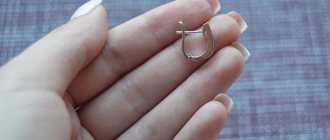» Signs » What shells promise in the house
0
7147
Article rating
Seashells in the house first remind us of warm overseas countries and wonderful holidays. However, many have probably heard different opinions about whether it is good to keep these sea souvenirs near you. Let's figure it out together.
Seashells in the house
Traditions and history
Different peoples have beliefs related to whether it is possible to keep shells in the house. People associate a clam's house with a powerful fortress that protects the owner. The larger the inhabitant, the larger its outer shell. Myths associated with sea inhabitants are varied and often contradictory. The inhabitants of the waters are especially revered in Buddhism. For religious adherents, shellfish are a symbol of new life. Buddha said that thanks to the shell you can hear anything. It symbolizes the word, and the stripes decorating it provide a connection with universal energy.
Many peoples of the East believe that it is possible to keep seashells at home because they reflect the movement of the sun across the sky. For Eastern people, the houses of sea creatures are things filled with sacred meaning.
Esotericists believe that the mollusk symbolizes fertility. It is associated with the best feminine qualities. The belief comes from the ability of sea creatures to grow pearls. A beautiful stone means chastity, light, wisdom, signifies sincerity and warmth.
The peoples of Oceania in ancient times worshiped twisted houses. For them, the significance of sea creatures was special. People believed that the cosmic shell was the refuge of the Great Spirit, and its marine counterparts were closely connected with it. Ancient beliefs say: a great power used its home to create heaven and earth.
Christians traditionally have a positive attitude towards nautical decor. The priests do not approve of belief in folk omens. It is believed that bad things can only happen to an unrighteous person. A true Christian does not require any protection by rituals - it is enough to believe in the Lord. In Christianity, shells are just decoration. Many see them as a symbol of travel and hope for the best.
What does a seashell contain - factors influencing the energy of the object
It is generally accepted that if a shell was voluntarily abandoned by its owner, then the object does not carry negative emotions or omens. That is why an important part of purchasing such a decorative element is to pay attention directly to the inside of the funnel. If it has a reddish tint, this means that the owner of the seashell was removed using the cooking function. Therefore, it is better to choose a different shell if the buyer wants to avoid trouble.
Upon returning home, it is recommended to immerse the item in a light solution with salt for several hours. This will draw out all the negative energy from the item that may have accumulated while the item was lying on the counter.
Observations and folk wisdom
Using shells as decor in an apartment, most people do not think about the possible sacred meaning of the product. Beliefs, however, warn: shellfish are closely related to human health and can affect the heart and blood vessels. A superstition says that if you buy a clam house, the owner will soon fall ill. Your blood pressure will probably rise, your heart rate will go wrong, your head will hurt. Having purchased an item and noticing ill health, you must immediately get rid of the new thing. If there are no changes, feel free to leave the home decor.
Others believe that a shell from the sea is filled with negative energy. A beautiful twisted specimen – the home of a deceased mollusk, its remains. Popular wisdom sees in it a source of evil and sorrow, attracting troubles and illnesses.
Although superstition explains why shells should not be kept in the home, not everyone can refuse the item. It reminds you of a pleasant vacation, time spent with family, loved ones.
Mystics are confident that the object can be secured. To do this, they perform a cleansing ritual, and repeat it regularly in the future. To store a souvenir, choose an entrance hall, a corridor, or a balcony.
In the photo, the mollusks amaze with their beauty, the complexity of their ornate shells, and the charm of their color tints. It's hard to believe that such a thing can bring evil or attract sadness. Since ancient times, people have noticed: the mollusk does not leave the house of its own accord. Only an external force can drive him out.
Later they found a way to find out how the occupant left the house. It is enough to examine the object from the inside. For greater reliability, pre-immerse in boiling water. If the funnel is reddish, it means that the inhabitant sacrificed himself, was forcibly evicted from the shell at the cost of his life. They don’t keep such an item at home or give it as a souvenir, seeing it as a source of negative energy.
Where is the place for the shell?
To believe or not to trust folk wisdom is an individual choice, but placing the shell in the right place is not at all difficult.
First, you should prepare the souvenir for “work”: take a container with clean salted water, lower the sink into it and leave for a couple of hours. The water will take away all the negativity (then it is better to pour it into the toilet). This procedure can be repeated from time to time (once every month or two, at your discretion). Even if you are a skeptic and do not consider this obligatory, you will still have to wash the souvenir from dust.
Many people say the most inappropriate places for a seashell in the house are the room where children sleep and the bedroom.
The shell should lie with the funnel down. If you absolutely don’t want this, you can put it the other way around, just put a bead or any piece of glass inside.
Feng Shui fans place sinks in the southern part of the house. Those people who want to find their soulmate need to move the shell (or better yet, a couple) to the southwestern sector. For self-development and study, the Chinese recommend keeping the talisman on the northwestern side.
Sometimes it's good
There are certain benefits from shells. Some beliefs say that the item brings happiness. To do this, you need to place it on your desktop. A person protected by a mollusk soon receives a new position, climbs the career ladder, and gains financial well-being. Such a person is respected by colleagues, and superiors listen to her. The belief is explained by the historical context: in ancient times, shells replaced money. The largest and most beautiful ones showed wealth, success, and prosperity of a person.
Fishermen in different parts of the world had especially many superstitions about shellfish. They believed in good omens associated with them; they made amulets to ward off bad weather and evil sea spirits from the boat. It was believed that a properly made amulet would protect against storms.
Many believe in the ability of a sea souvenir to protect against energy vampirism. This feature is common to many; Often people have no idea about their quality, but they bring trouble to others. It is difficult to identify such a dangerous person, and it is even more difficult to protect yourself from him. If a certain person becomes happier by getting involved in a conflict, talking with a weak person, he probably belongs to the energy vampires.
The best way to protect yourself is to constantly wear a bracelet or pendant made of natural shells. It will strengthen your personal field and will not allow others to drain your strength and energy.
How to neutralize negativity
If you have personally seen the bad influence of the clam shell or are afraid of disasters, neutralize the negativity. To prevent the omen from coming true, simple cleansing rituals will help:
- Method number 1. Take warm water into a saucepan and dissolve 2-3 tbsp in it. l. salt. Dip the souvenir into the solution for 15-20 minutes. Salt water cleanses objects of any negativity.
- Method number 2. Write down a bad omen on a piece of paper and burn it. Along with the flame, the upcoming negative event will also disappear.
After processing, the souvenir is placed in any place you like. But the shell has the ability to accumulate energy. So that she accumulates only positive things, she is left in a well-lit place.
For example, if you place a seashell next to the window, then within a month your business will go uphill.
A souvenir in the workplace is a good omen. Soon your bosses will recognize you as a real specialist, which will be followed by an increase in salary or promotion.
Sea shells are beautiful souvenirs reminiscent of summer holidays, sea surf, evening sun diving into the water, fresh air. There are many contradictory signs associated with them, so if you are afraid of problems, wash the shell in a saline solution. It neutralizes the negative, after which you will, without a doubt, be able to admire the beautiful view of the souvenir every day.
Eastern teaching
There are certain rules for using clam houses according to Feng Shui. The teaching is simple and full of logic. It interprets the shell as the home of a water-dwelling creature. Water symbolizes life, cleanses and refreshes. It is necessary for everyone.
For those who adhere to Feng Shui, the abode of a mollusk is a source of positive energy and various benefits. They believe that it brings:
- financial success;
- good luck;
- pleasant acquaintances;
- useful connections;
- talents of a speaker, public person;
- respect for others;
- fame.
Eastern teachings talk about the ability to help a traveler.
There is only benefit from copies obtained peacefully. The house of a dead shellfish will not bring any good.
According to Feng Shui, cowries are considered the most useful. They are multi-colored and decorated with ornate patterns. These are most often used in home decor. They are used to make paintings, panels, assemble frames, decorate flower pots and jewelry with them. Esotericists who adhere to Feng Shui are sure that such objects cleanse the energy field of the house, bring harmony, and give the owner peace of mind and fortitude.
Mineral deposits
Corals in the sea
Polyps, the progenitors of corals, live only in warm waters, where the water temperature is never colder than 21 degrees. The largest growing areas are the Pacific and Indian Oceans, the Red, Caribbean and Mediterranean Seas, as well as the Canary and Midway Islands, the shores of Taiwan and Japan, Tunisia and Algeria, Turkey and Australia, Yugoslavia and Sardinia.
Off the northeast coast of Australia is the world's largest coral reef. Its length is 2.2 kilometers. And off the Israeli coast there is the Eilat Reef, 1.2 kilometers long.
There are two main ways to harvest coral:
- Manual - specially trained divers remove coral elements from the bottom. This method is difficult and dangerous, and the production volumes are relatively small, so it is not used so often.
- Through special large-mesh nets that run along the bottom, capturing a large amount of material. The disadvantage of this mining method is that a lot of coral is damaged in the process.
What did the ancient sailors believe?
The main sign: at sea (more precisely, on a ship) there is no place for women. In the era of steel liners, this is no longer relevant, but the ancestors assured that those who ignore the demands of fate will face misfortune. Where did this warning come from? It is enough to remember what ancient galleys and frigates looked like - their stems were always decorated with carved figures with recognizable girlish features. According to sailors, ships had their own soul - it was feminine, jealous, capricious, capable of being offended if someone thought of bringing another lady onto the ship.
The signs of sailors are so diverse that a separate encyclopedia could be dedicated to them. There were secret ways to summon the wind and calm the storm. The shipbuilders had their patrons and enemies. By communicating correctly with both, people tried to earn the favor of higher powers and ensure a smooth journey for themselves.
The most ancient “special” stones, of course, were stones located in some wonderful places: near rivers, springs, pools, that is, near watering holes convenient for hunting, or shallows, riffles, convenient for fishing, or river crossings , near sources with especially clean (or cold, or healing) water, on the edges or clearings of forests or, conversely, in the most remote thickets. The stone made the place noticeable and usually became a prototype of the altar, to which gifts or sacrifices were brought to the spirits of these places and waters.
Beliefs attributed curious and amazing properties to some stones. A stone that is hard, strong, heavy, with sharp corners has long been considered capable of imparting similar qualities to a person.
The weight of a stone was sometimes considered a very important property, and in some regions of the Czech Republic a stone with a piece of bread was tied to the last harvest sheaf so that the next year the grain would be even heavier, and in Germany stones were placed at the base of the branches of fruit trees so that there would be a lot of fruit and they would be heavy.
Stone as a material for walls and fences was considered a symbol of a material barrier, and it is possible that this is why stone slabs are placed on graves throughout Europe.
In North Africa (Morocco), when the bride left her parents' house, it was necessary to throw a stone to ward off evil spirits and make the marriage happy. Among the Western Slavs, when a calf was separated from a cow, it was considered necessary to throw a stone aside so that the cow would not yearn for the calf and give a lot of milk.
In Germany (Lower Saxony) it was believed that you can get rid of warts by tying knots on a thread according to the number of warts, placing this thread under a stone by the road: the warts will spread to the one who steps on this stone.
In Finland, an envious neighbor could secretly take a stone from someone else's harvest field and put it in his own, so that he too would have a rich harvest. The plowshare was stroked with flint before plowing, so that weeds would not grow in the field.
In Rus', unusual stones were also held in high esteem. For example, near Pereyaslavl (on Lake Pleshcheyevo) there still lies a multi-ton “blue” stone, which was the habitat of a demon that attracted people from Pereyaslavl to perform honors on the feast of the apostles Peter and Paul. This stone was buried, then it appeared again on the surface; later they wanted to lay it in the foundation of the church, but when transported across the ice of Lake Pleshcheevo, it broke the ice and sank.
Of course, no one intended to lift the stone from the water, but it inexplicably ended up again on the northeastern shore of the lake.
Plutarch described strange boulder stones at the bottom of the Eurotas River (in the south of the Peloponnese), which rose to the surface of the water at the sound of a trumpet. Nicholas Roerich wrote about a wonderful stone that fell from a distant star and appears in different countries every time before important events.
In Europe, stones located at crossroads were considered unusual. Residents of Southern Italy wore small stones from crossroads as amulets against “damage” or the “evil eye”.
In India, on the contrary, seven stones were placed at the intersection of three roads to protect against the “evil eye.”
Tombstones, in addition to protecting the living from the dead or graves from desecration, were considered very useful. For example, in Japan at the beginning of the twentieth century they believed that powder from a tombstone, washed down with water, would be the best cure for tuberculosis. On the island of Sardinia, until recently, there was a belief in the healing properties of stones stepped on by a rejected wife, and such stones were worn as amulets.
Among the Eskimos, a stone from a hearth, which remains unharmed throughout the life of an entire generation, is considered stronger than fire and serves as an amulet of longevity. Obviously, our ancestors recognized the “special” properties of certain stones and worshiped them.
The purchase of seashells is most often done in order to decorate your home with seafood. Such objects can carry associative childhood memories, resemble the sound of sea waves and create harmony of the soul. Since ancient times, people have sought to decorate their home with such products. In the modern world, almost nothing has changed, except for the fact that buying a seashell has become more accessible.
However, most transcripts indicate that shells in the house are not a very good omen. But, despite this, a very large number of people bring this item as a memory of the place they visited and got great pleasure from enjoying its atmosphere. Why not take a piece of your favorite place home with you? Although before this it is advisable to study all the positive and negative aspects of such a souvenir.
Compatibility with other stones
Coral is a bright, beautiful and interesting mineral, but it lacks sparkle. Therefore, it is often combined with pearls. This combination is successful both aesthetically and energetically.
“Gift of the Sea” is compatible with many gems, but the main principle of their choice is color. It is recommended to combine dark and bright corals with light stones, white ones with colored ones.
Magnificent coral inserts are adjacent to amethysts and agates, turquoise and lapis lazuli, onyx and sapphire.
It is not recommended to use corals with jasper, malachite, beryl and sardonyx in one piece of jewelry.
What is the wave whispering about?
Animals
Many signs relate to meeting ocean inhabitants.
- The unexpected appearance of whales, for example, can warn of impending danger.
- The cries of the albatross are associated with a storm and an impending disaster.
- Shipbuilders always saw kindred spirits in seagulls - it was believed that dead sailors, turning into white birds, protected their surviving comrades.
- It was a very good sign to see a dolphin in the sea: signs in this case promised all sorts of pleasant surprises, success in business, financial profit, and the newlyweds - the imminent birth of an heir.
About dreams
Various dream books also addressed water themes. What does the sea mean in a dream? It all depends on what exactly the vision will be.
- High waves indicate impending changes, which are unlikely to be favorable (for girls, in particular, a quarrel with their lover is predicted).
- Dirty water is a sign of illness and conflict, while clear and light water is a promise of happiness and peace.
A little about vacation
At the end of a seaside vacation, tourists are advised to throw coins into the foam of the surf. This kind of “payoff” to the masters of the elements will allow you to preserve pleasant impressions of your vacation. For the same purpose, some people bring home stones from the sea - in this case, signs promise a lot of warm memories and a quick return to a hospitable shore.
Interestingly, shells are not such a simple souvenir. On the one hand, they are rightfully considered a talisman (very ancient and powerful), because they conceal the centuries-old power and wisdom of the water element. At the same time, empty mollusk shells (as well as fossilized coral branches) are evidence and symbols of death. It can be unsafe to keep them in your home, and you definitely shouldn't keep them at the head of your bed.
Plants for family well-being
If you are looking for a loved one, and are already losing hope of luck, urgently start growing indoor flowers, plant at least one plant that can attract prosperity to your personal life. And there are many such indoor flowers.
Spathiphyllum
Topping the list of plants that bring success in love is the “female happiness” indoor flower. It is recommended to grow it for single people, especially unmarried females.
Experts in folk superstitions are convinced that after spathiphyllum is placed in a home, following the flower:
- a loved one will appear in the house;
- mutual understanding and peace will reign in the family;
- a child will be born to a couple who could not have children.
Anthurium
The “pair plant” for spathiphyllum has similar properties only in relation to men. It is not for nothing that it is called “male happiness.” If your loved one has become depressed and passive, place an anthurium in the marital bedroom. The plant will fill the house with positive energy, the man will perk up and remember that she is the head of the family, and will begin to protect and protect the woman.
Roses
Another plant that will help a childless family have a child. To do this, you need to make a garland of 32 petals of an indoor rose (preferably bright red or pink), and hang it over the marital bed. You need to use flowers that were planted in the house at least a year ago. You can also brew tea from its petals to strengthen marriage bonds, and drink a drink of love between your wife and husband.
Oxalis
Oxalis quatrefoils are a symbol of good luck. It will be useful for single women to make their dream of meeting a loved one come true. Spouses next to oxalis will find mutual understanding and be able to save the family.
Myrtle
This miniature evergreen tree is often given to newlyweds on their wedding day as a symbol of eternal love and a strong marriage. Myrtle can bring quick love to an unmarried young lady.
Chlorophytum
“Green air conditioner” will not only freshen the air in the room, but also help to find stability in the relationship of a married couple. It helps lonely people find harmony by sorting out their own thoughts.
Violet
A symbol of inexhaustible love, affection and mutual understanding. In a house where scandals do not subside between husband and wife, reproaches are constantly heard, it is necessary to grow Saintpaulia. Delicate flowers will help improve family life.











